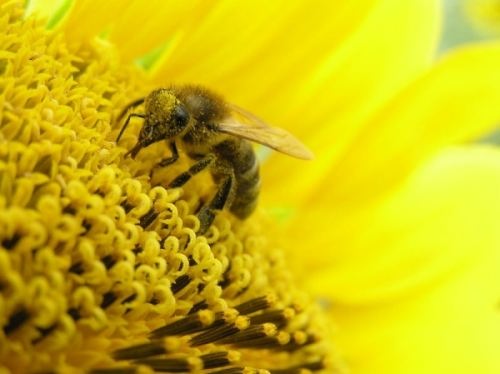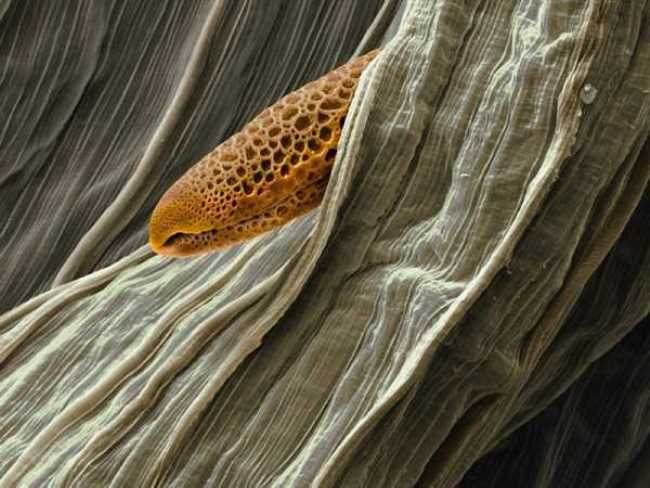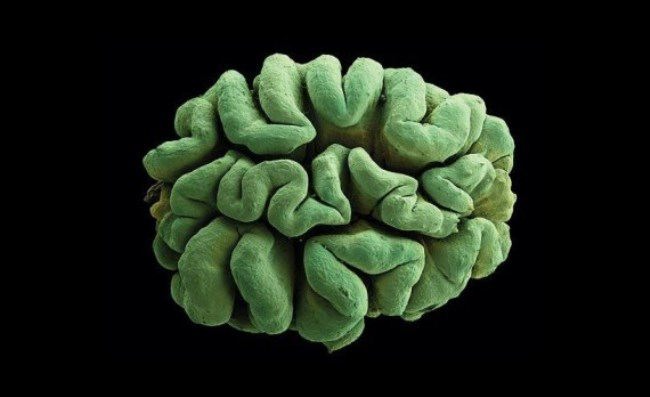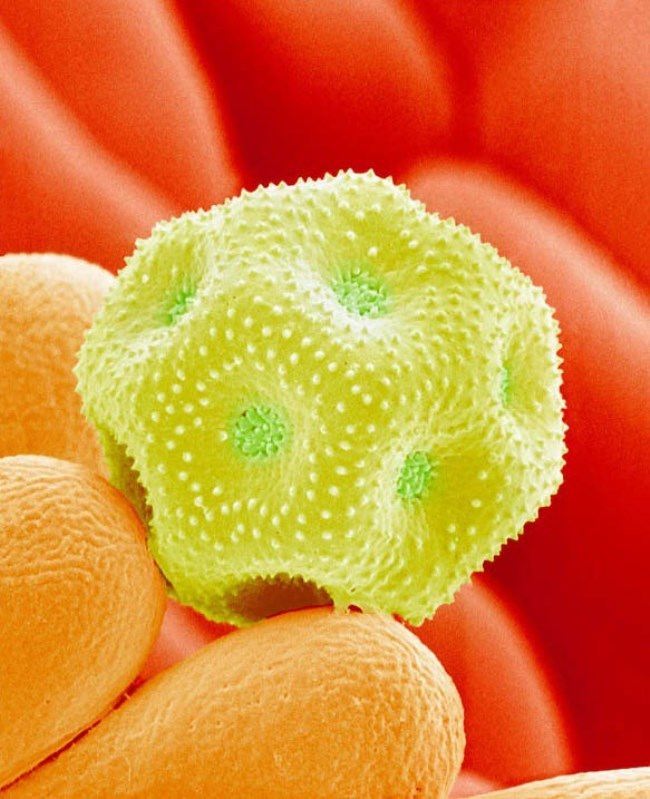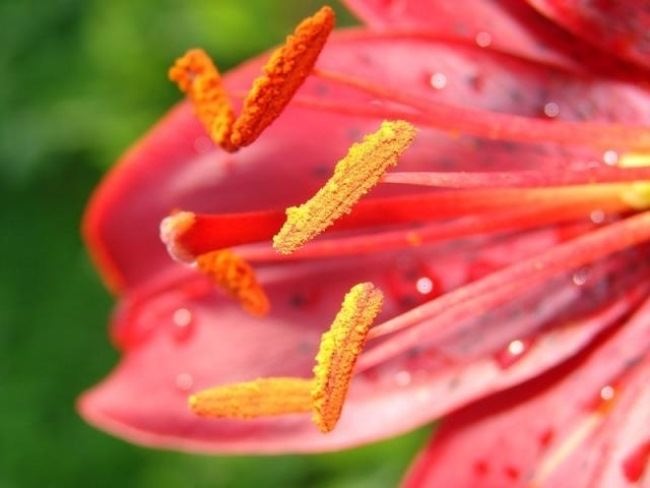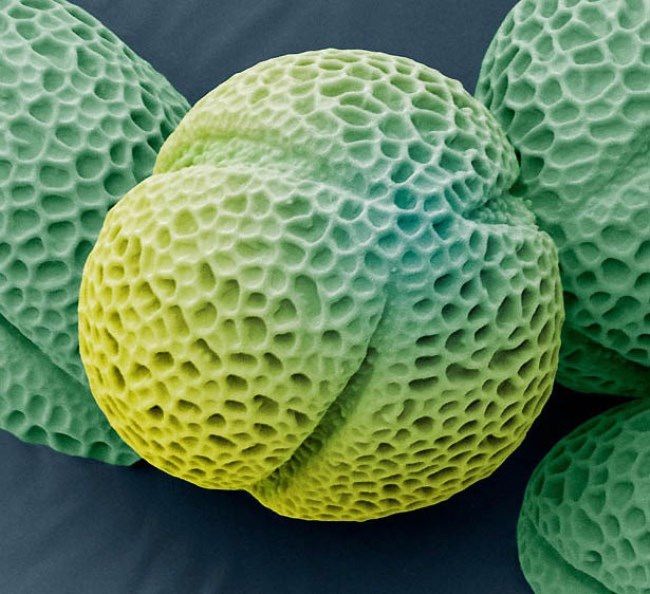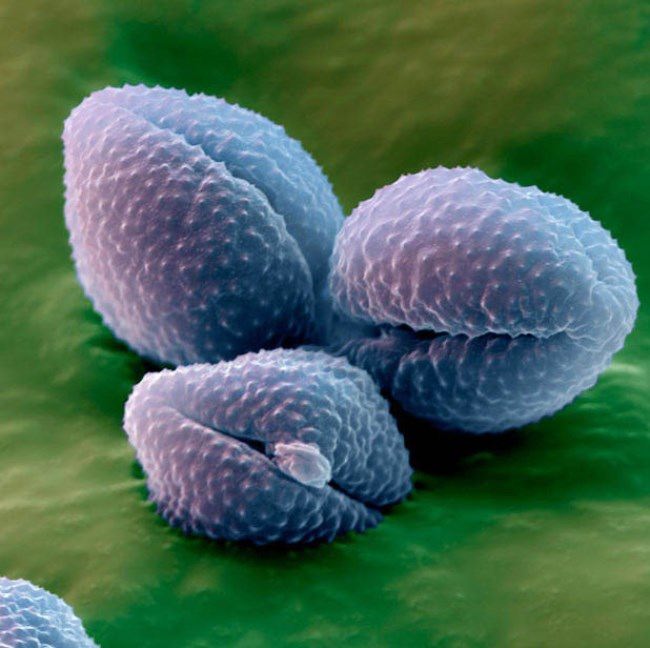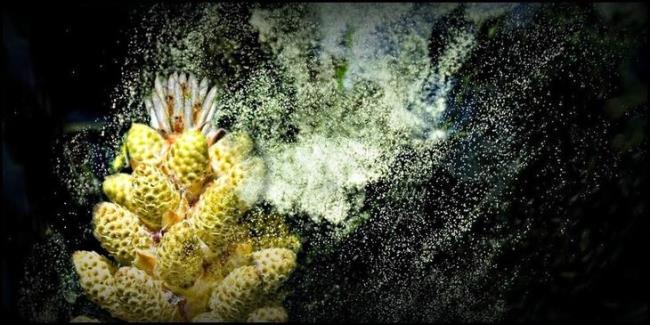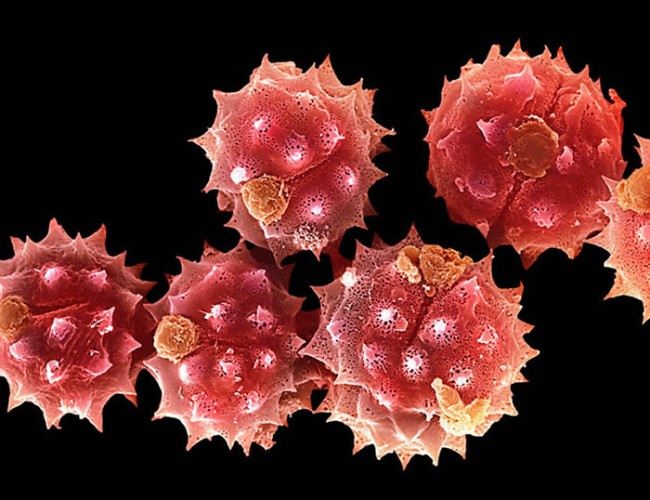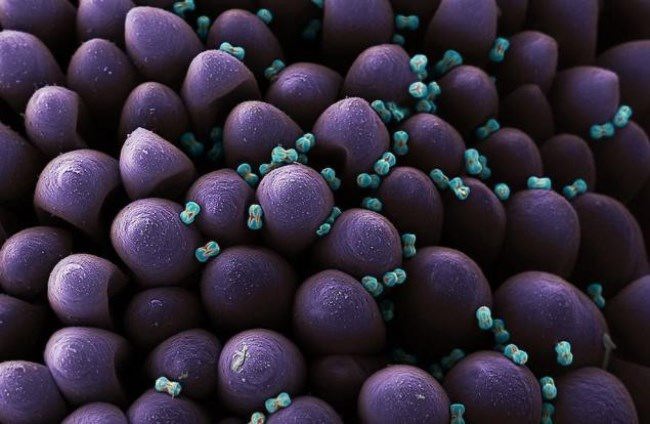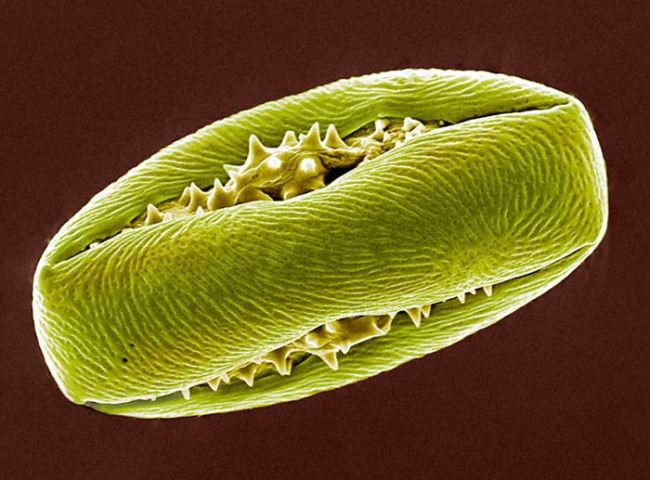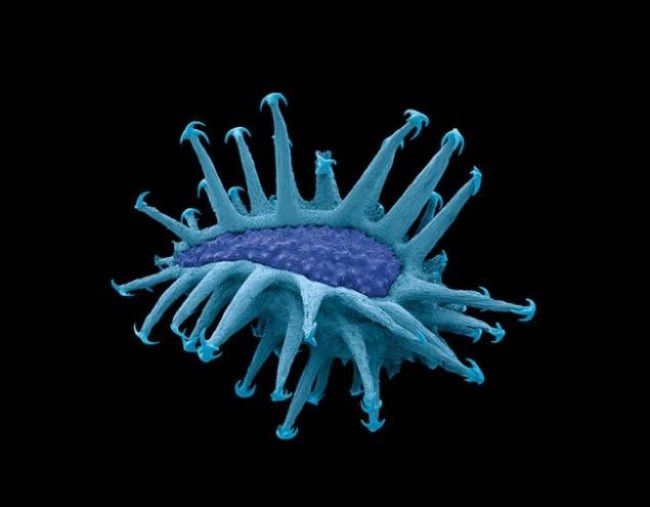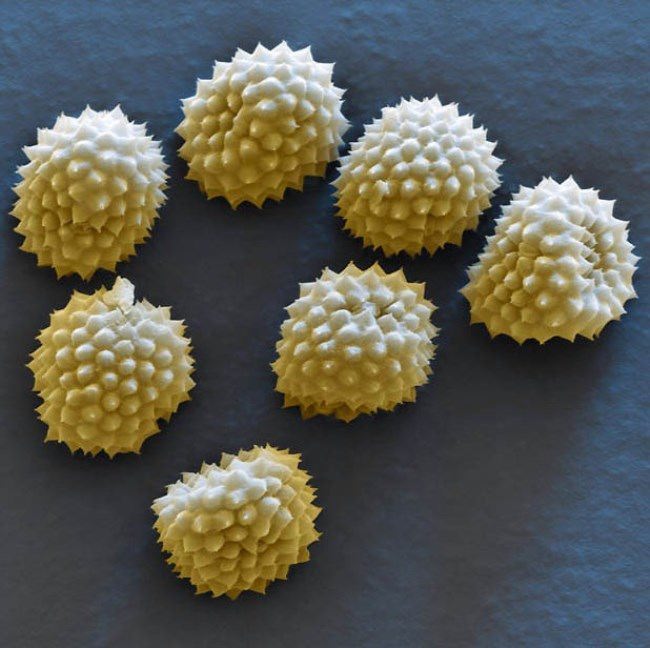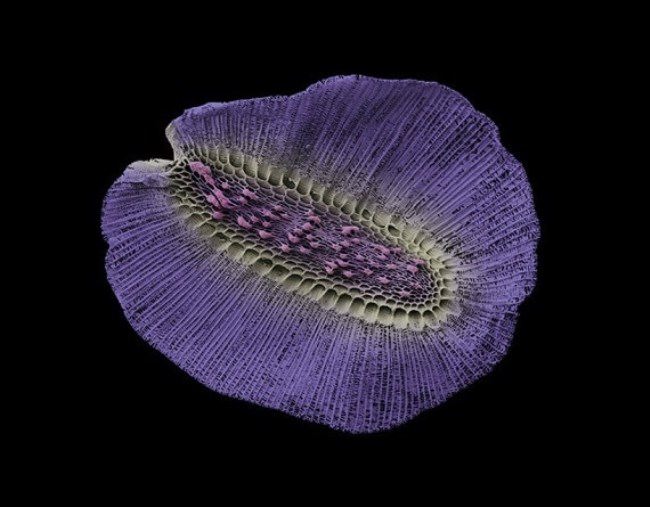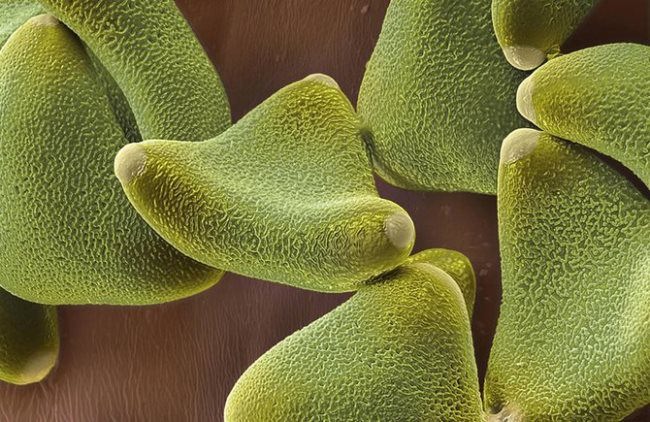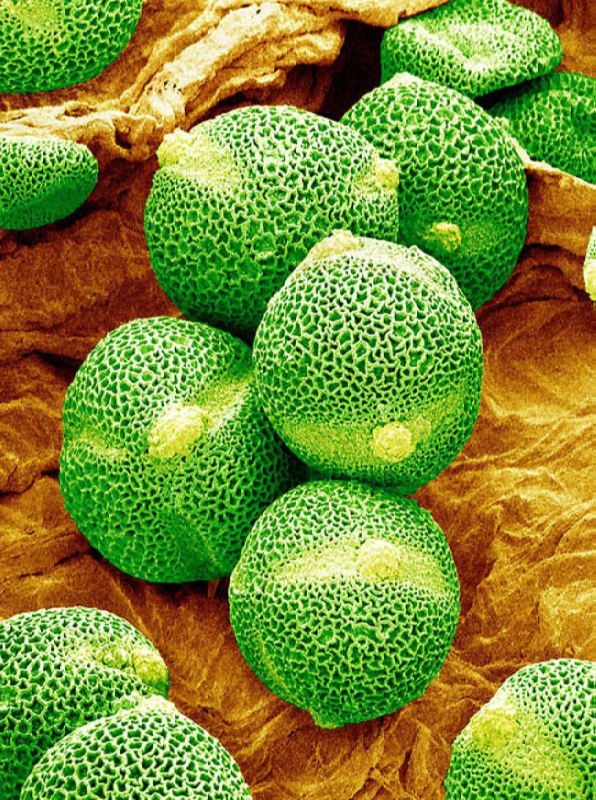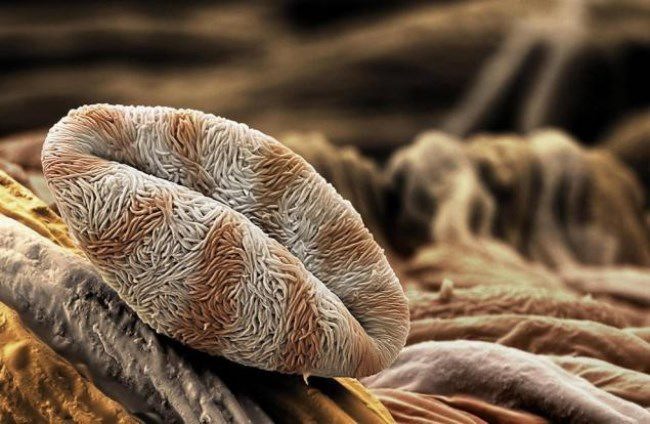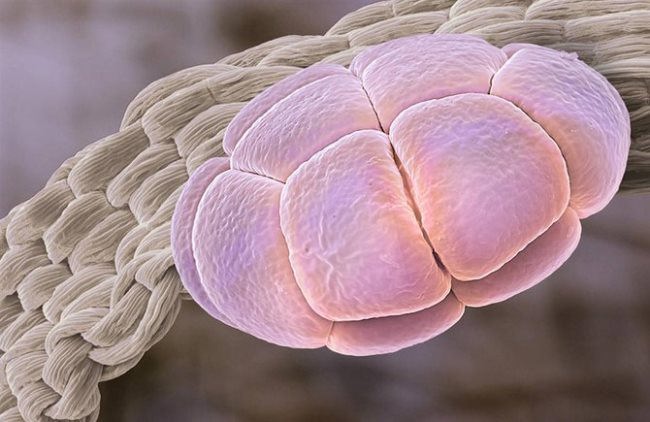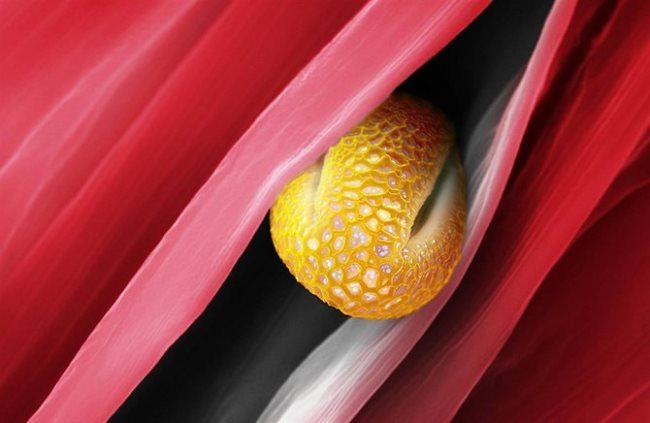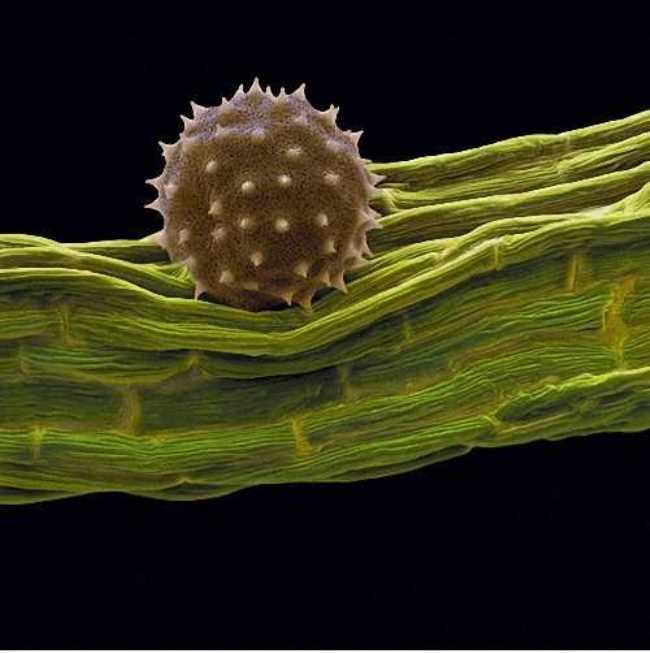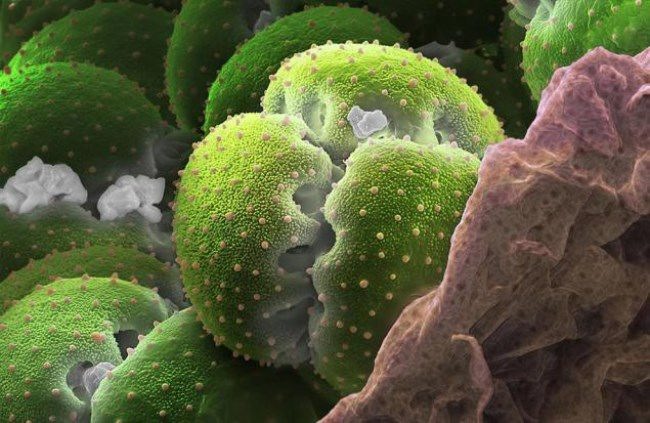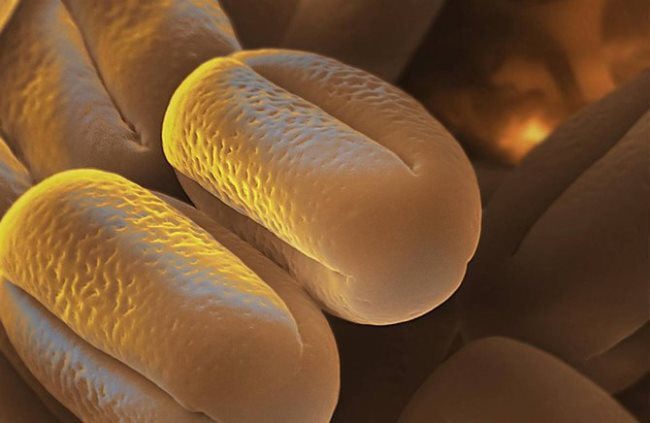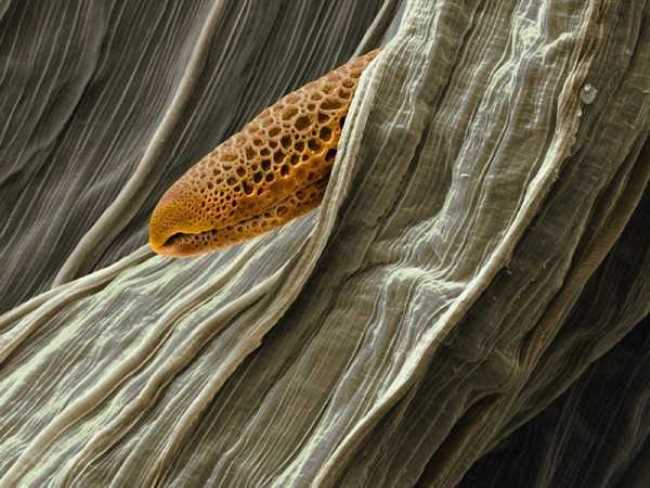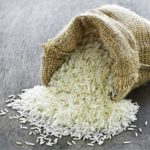Pollen – tasty and healthy
When springtime comes around, bees get busy and pollen fills the air. For people who suffer from allergies, pollen seems to be a curse rather than a blessing. Some plants produce astronomical quantities of pollen. Just one birch catkin, for example, may release over five million grains of pollen, and a typical birch tree will likely have several thousand catkins. For people who suffer from hay fever, this proliferation of pollen results in great discomfort.
But our lives depend on this unique dust. Pollen consists of tiny grains that are produced in the male organs of flowering and cone-bearing plants. So, plants produce pollen in order to reproduce. The female organ of a flower (the pistil) needs pollen from the male organ (the stamen) in order to be fertilized and produce fruit. Pollen grains are tiny and we can hardly see them with the unaided eye. However, under a microscope we can see that both the size and the shape are unique to each particular species. The scientists often study the pollen grains to identify plants that people cultivated centuries ago.
Wind helps to pollinate many types of trees and grasses, but flowering plants that do not grow in high densities need a more efficient system. Bats, birds, and insects provide a very effective delivery service. But, of course, they don’t transport pollen from one flower to another without a reward. Flowers offer them nectar. Insects do by far the most pollination, especially in temperate lands. They visit countless flowers every day while feeding. Bees are needed to pollinate such crops as almonds, apples, plums, cherries, and kiwis. Farmers even pay the beekeepers for the services each hive provides. The honeybee is the world’s most important pollinator. Flies pollinate the flowers of the cacao. A number of the world’s most majestic trees, such as the kapok and the baobab, depend on bats for pollination.
Many plants depend on the air to transport their pollen after it is released from catkins or cones. Water also serves to transport the pollen of some water plants.
Thanks to pollination, plants thrive and produce the food on which we depend.
With the help of an electron microscope and the technique of coloring images, a molecular biologist and part-time scientific photographer Martin Oeggerli discovers the secrets of the microscopic pollen.
